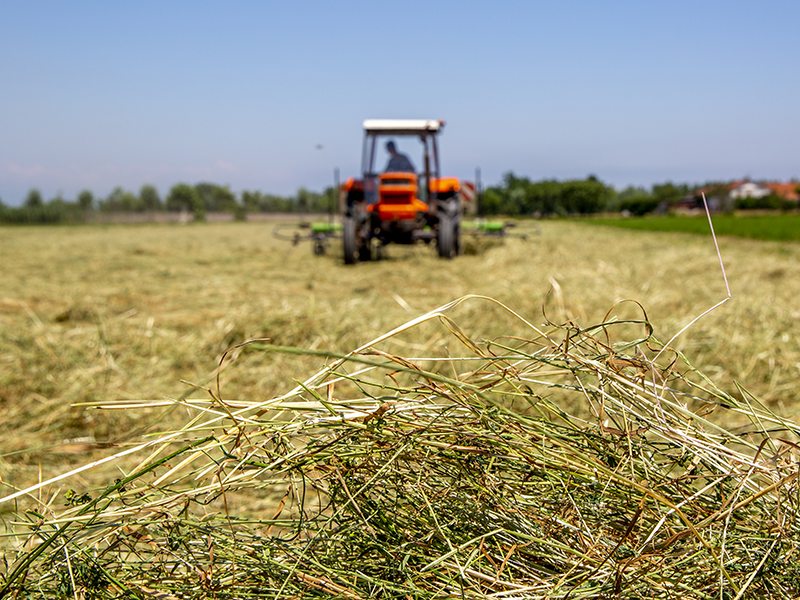What is
Symbiotic Agriculture
Symbiotic Agriculture is an agri-food production system that aims to restore, maintain and improve the biodiversity and microbial functionality of soils.
Through the improvement of the microbial biodiversity of soils and good agricultural practices, Symbiotic Agriculture aims to achieve the following objectives:
• Environmental sustainability – improving the “soil system”.
• Animal health – ensuring animal health and welfare
• Social sustainability – remunerate producers for the work done to improve the health of the soil and food.
How you do it?
It’s easier than you think:
By applying microorganisms (microbial biota) to cultivated soil that stimulate the recovery of biodiversity and microbial activity in the soil.
Using all the practices of conservation agriculture, for example, minimum tillage.
Practicing crop rotations and replacing monocultures.
Drastically reducing the consumption of nitrogen, phosphate, potassium fertilizers (dangerous because they are polluted by cadmium which is carcinogenic) and pesticides.
Abolishing the use of GMOs and GMO-derived products
Promoting the cultivation of multi-year polyphytic meadows, meadows with a rich variety of species of grasses and legumes (mushroom grass, fescue, clover, alfalfa etc. …)
Using zeolitic minerals (chabazites) and humus on soil to promote the vitality of microorganisms.
By raising animals on a diet composed of raw materials obtained from Symbiotic Agriculture.
By developing the concept of closed cycle farming, such as the cow-calf or egg-chicken line, which allow numerous qualitative and productive advantages.
Promoting supply chain projects that encourage cooperation between actors at different levels, from agricultural producers to processors and distributors up to the final consumer.
Not using antibiotic, sulphonamide, and cortisone substances in animal breeding.
Increasing soil carbon sequestration (CO2)
Reducing methane and ammonia emissions (SOP lights).
Promoting the use of earthworms and insect meals.
Symbiotic agriculture manifesto


For a healthier soil
1. Regenerate the microbial BIODIVERSITY of soils, the fulcrum of the health of agroecosystems.
2. Increase the total ORGANIC SUBSTANCE in the agricultural soils of the producing companies.
3. Encourage the development of AGRONOMIC PRACTICES with low environmental impact and truly CONSERVATIVE, which favor the microbial vitality of soils.
4. Support the fundamental importance of rigorous ROTATION PLANS for agricultural crops.
5. Drastically reduce the SUPPLY of NITROGEN and PHOSPHATIC chemical FERTILIZERS to crops.
6. Decrease the INPUT of HEAVY METALS in agricultural soils.
7. Reduce the CHEMICAL DEFENSE INPUTS of agricultural crops.
8. Increase the CO2 retained in the soil through the BIO-SEQUESTRATION of carbon IN THE ROOTS of crops.
9. Allow CAREFUL MANAGEMENT of WATER RESOURCES in agricultural and food companies.

For virtuous production
10. Link the AGRI-FOOD PRODUCTS, in qualitative and quantitative terms, to the MICROBIAL BIOTA OF THE SOIL in which cultivation took place.
11. Cultivate and transform AGRICULTURAL RAW MATERIALS WITH DISTINCTIVE CHARACTERISTICS from a functional and nutraceutical point of view.
12. TRANSFORM AGRICULTURAL RAW MATERIALS through PROCESSES THAT RESPECT and enhance their intrinsic nutritional and organoleptic properties.
13. Create a SOCIALLY VIRTUOUS PRODUCTION SYSTEM, which gives dignity to producers and fair profitability – shortening the producer-consumer supply chain.
14. Promote the DEVELOPMENT OF PLANT AND ANIMAL BIODIVERSITY within agroecosystems.
15. Promote the use of MICROBIAL COMPLEXES for CROP DEFENSE AS WELL AS FOR HUMANS.

For informed disclosure
16. Bring your voice to the REGULATIONS ON FERTILIZERS AND PLANT PRODUCTS.
17. ACTIVELY PROMOTE RESEARCH projects, for the purposes referred to in the previous points, in the
agricultural, food and human health fields.
18. Create a network of COOPERATION AND BILATERAL EXCHANGE BETWEEN COMPANIES in the agri-food sector, universities, testing and research centres, institutions, professionals, and consumers.
19. Create Symbiotic Agriculture production districts to offer the market a basket of unique products, linked to the local Microbial Biota, thus valorising, through the products, the territories of origin.
20. DEVELOP TECHNOLOGIES TO SUPPORT DIGITAL TRANSFORMATION IN THE AGRICULTURAL FIELD, an engine for new solutions.
21. Drastically reduce the overbuilding of agricultural soils by promoting the creation and diffusion of eco-greenhouses and eco-stables that reduce the use of cement.


Add Comment